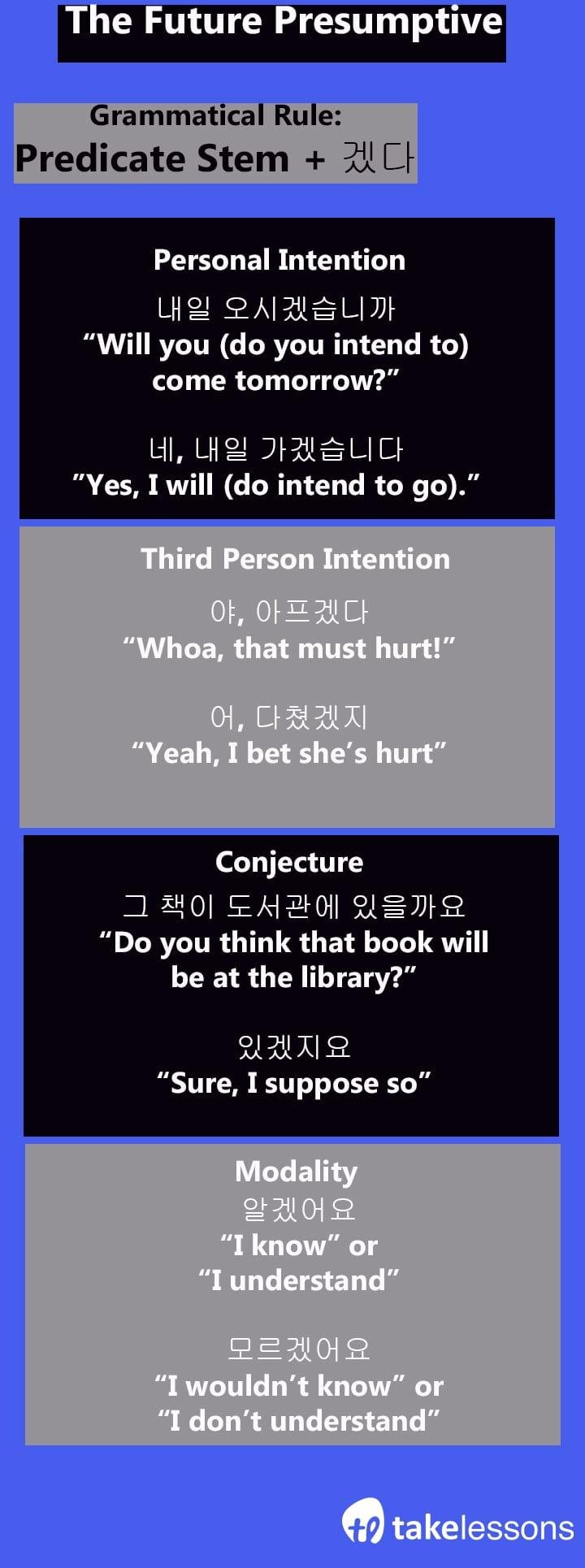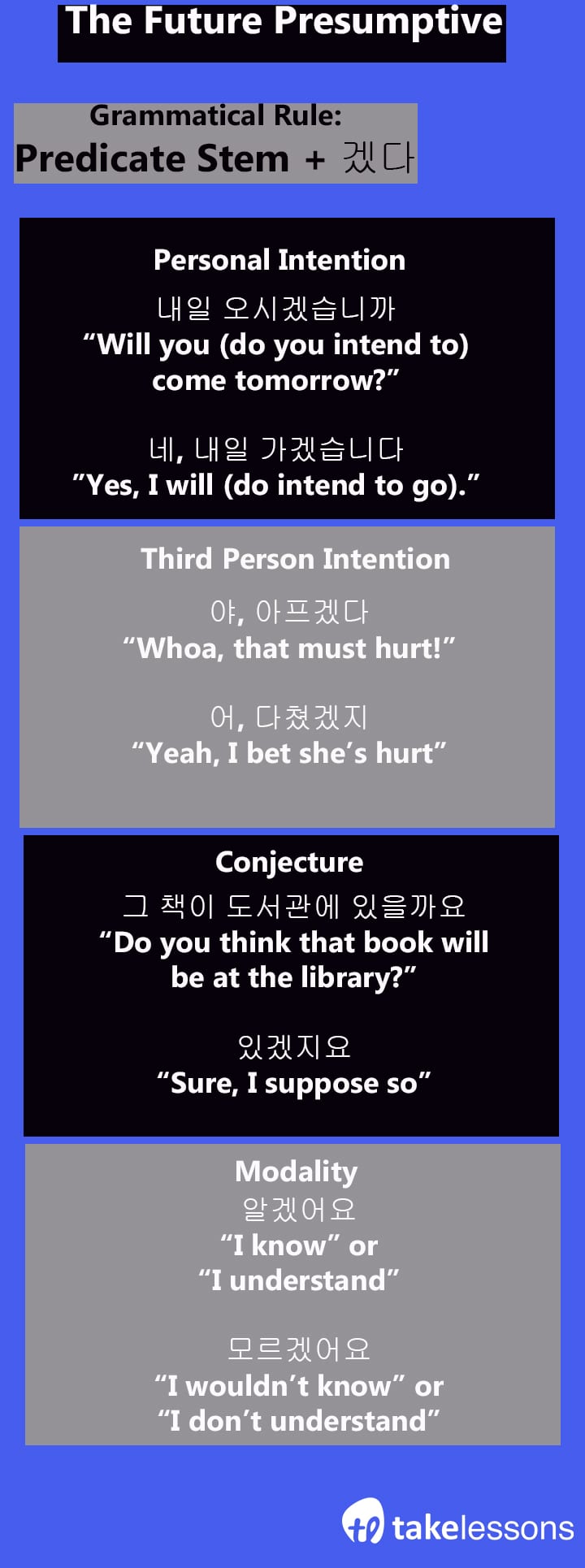In part four of our four-part Korean grammar series on describing the future in Korean, language teacher Bryce J. explains how to use the future-presumptive tense in Korean.
Before you learn about the future-presumptive tense, make sure you review the other future tenses in Korean:
- The Korean Future Tense Part 1: The Probable Future
- The Korean Future Tense Part 2: Definite Future
- The Korean Future Tense Part 3: Immediate Future
The Future Presumptive
Many people falsely assume that this grammatical pattern is THE future tense in Korean.
Although it’s often called a future tense by most textbooks, the future-presumptive tense has several functions, none of which is purely a statement of future events.
Grammatical Rule – Predicate Stem + 겠다
The future-presumptive tense functions as follows:
- A matter-of-fact statement of personal intention in 1st person declarative and 2nd person question (slightly more formal compared to the equivalent expression [verb stem + (으)ㄹ래요])
- A notion of intention in 3rd-person sentences
- A conjecture or assumption regarding the state of being when used with adjectives
- Used with verbs to indicate modality (likelihood, ability, or permission)
Here are some example sentences for each of these functions:
1. Personal Intention (Formal)
A: 내일 오시겠습니까? “Will you (do you intend to) come tomorrow?”
B: 네, 내일 가겠습니다. “Yes, I will (do intend to go).”
2. Third Person (Intention)
(A and B witness a little child fall and scrape her knee on the pavement.)
A: 야, 아프겠다! “Whoa, that must hurt!”
B: 어, 다쳤겠지. “Yeah, I bet she’s hurt.”
3. Conjecture
A: 그 책이 도서관에 있을까요? “Do you think that book will be at the library?”
B: 있겠지요. “Sure, I suppose so.”
4. Modality
알겠어요. “I know or I understand” (instead of 알아요).
모르겠어요. “I wouldn’t know or I don’t understand” (instead of 몰라요).
You can also see this grammar in combination with the simple past tense where it has only the meaning of intention as in “must have” or “I’ll bet that.”
For example:
아마 기차로 갔겠지요. “I’ll bet he must have gone by train, don’t you think?”
Finally, the future-presumptive [predicate stem + 겠다] is also seen in various fixed, formulaic expressions as follows:
– 잘 먹겠습니다. Bon Appétit.
– 다녀오겠습니다 I’ll be back.
– 주문하시겠어요? Are you ready to order?
Clearly there is significant overlap in the meaning and usage of the different functions of the future-presumptive [predicate stem + 겠다], which is to be expected.
The grammar has only one meaning but multiple applications.
Ultimately, the future-presumptive tense [predicate stem + 겠다] tends to have a formal feel to it when used in first and second person, whereas in the third person it’s generally interpreted as “must.”
To be clear, let’s distinguish between the two kinds of “must” in English. One expresses obligation:
“You must buy me lunch.”
Obligation is expressed by the Korean construction [verb stem + 어/아야 되다/하다], a completely different grammar form.
The other “must” expresses probability, assumption, or likelihood:
“That girl with Bill must be his fiancé.”
“It’s raining — it must be getting cooler.”
It’s this second kind of “must” which is conveyed by the future-presumptive [predicate stem + 겠다].
As you can see, there are several different ways to use the future-presumptive tense, and this can be confusing for beginners.
Don’t get discouraged, with hard work and consistent practice, you will learn how to use the Korean future tense.
Need some help with Korean grammar? Find a Korean teacher near you!
 Post Author: Bryce J.
Post Author: Bryce J.Bryce J. teaches college-level Korean and ESL classes in Minneapolis, MN. He has his MA. in teaching from the Middlebury Institute of International Studies. Learn more about Bryce here!
Maile Proctor


